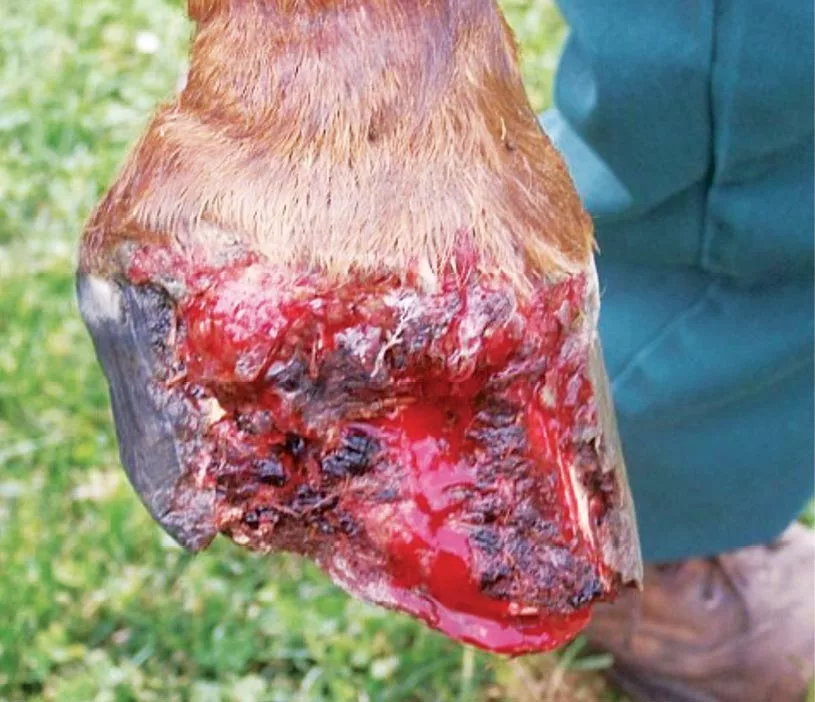American Farriers Journal
American Farriers Journal is the “hands-on” magazine for professional farriers, equine veterinarians and horse care product and service buyers.

Veterinary assistance is critical before handling avulsion cases as sensitive structures are within veterinarians’ realm of expertise, and radiographs, nerve blocks and sedation might be necessary.
Knowledge of anatomy is particularly important to be able to evaluate a damaged foot. Craftsmanship skills also should be developed so you can manufacture and manipulate proper mechanics into any appliance.
There’s nothing routine about hoof avulsion.
There is a wide range of types and severities of hoof avulsions that a farrier might be presented with. They might be a result of trauma or because a farrier had to resect hoof wall to rid it of white line disease. They might come as an acute injury or be chronic in nature.
Regardless of the cause, a seasoned farrier might be challenged to provide the horse with the best support and protection possible. In an American Farriers Journal webinar, Leighton, Iowa, farrier Jeff Ridley explains how he approaches avulsions.
When presented with a hoof avulsion, there are five critical elements for a farrier’s success — seek veterinary assistance, understand foot anatomy, think outside the box, farrier skills and communication.
Veterinary assistance. Ridley considers getting assistance from a vet a top priority before addressing an avulsion.
Whenever sensitive structures are involved, it is within the realm of veterinary expertise. One not only wants to call upon their expertise to remain in compliance with veterinary practice laws, but they also have access to diagnostic tools that a farrier does not.
“Depending on…